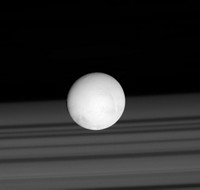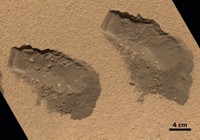Advertisement
Grab your lab coat. Let's get started
Welcome!
Welcome!
Create an account below to get 6 C&EN articles per month, receive newsletters and more - all free.
It seems this is your first time logging in online. Please enter the following information to continue.
As an ACS member you automatically get access to this site. All we need is few more details to create your reading experience.
Not you? Sign in with a different account.
Not you? Sign in with a different account.
ERROR 1
ERROR 1
ERROR 2
ERROR 2
ERROR 2
ERROR 2
ERROR 2
Password and Confirm password must match.
If you have an ACS member number, please enter it here so we can link this account to your membership. (optional)
ERROR 2
ACS values your privacy. By submitting your information, you are gaining access to C&EN and subscribing to our weekly newsletter. We use the information you provide to make your reading experience better, and we will never sell your data to third party members.
Physical Chemistry
Space Vehicle Curiosity Completes First Analysis Of Martian Dirt
Astrobiology: Chlorinated methanes detected, but carbon source, whether biological or not, is still unknown
by Elizabeth K. Wilson
December 5, 2012

Hints from NASA scientists that organic compounds may have been discovered on Mars have finally been clarified by the researchers involved.

At a Dec. 3 press conference, they revealed that chlorinated methanes—CH3Cl, CH2Cl2, and CHCl3—have been detected in a sandy soil sample processed by the NASA rover Curiosity’s on-board chemistry laboratory. The findings were presented at the American Geophysical Union meeting in San Francisco.
But whether those organic compounds can be taken as a sign that Mars once harbored life will have to wait: The compounds’ chlorine has been confirmed to be Martian, but team members will need to perform more analyses to determine whether the carbon source is also from Mars. For example, the carbon could be a product of the decomposition of a Martian perchlorate, or it could come from trace residual Earthly carbon in Curiosity’s instruments.
As our closest planetary neighbor, and because of its watery ancient history, Mars is one of the most likely bodies in our solar system to once have harbored microbial life. But even if scientists eventually show that the organics’ carbon is Martian in origin, they’ll have to carefully analyze carbon isotopes before concluding whether the organics are abiotic or biological in origin.
Indeed, Paul R. Mahaffy, principal investigator of the SAM (Sample Analysis at Mars) instrument, cautioned that Curiosity would need to find many more carbon compounds than the few simple ones already detected in order to begin hypothesizing potential biological origins. “If we just see traces of simple organics, then it’s hard to draw conclusions,” he said.
Since Curiosity landed on Mars four months ago (C&EN, Aug. 13, page 7), the rover has processed five scoops of Martian dirt in its SAM and CheMin (Chemistry & Mineralogy) instrument suites. The first four scoops were taken to clean the instruments in preparation for the scientific analyses to follow.
The analysis of the fifth scoop is the first measurement that involved all of Curiosity’s analytical instruments, said John P. Grotzinger, the mission’s project scientist.
That sample’s composition is similar to those analyzed by the Mars rovers Spirit and Opportunity, rich in magnesium and aluminum oxides. Curiosity also detected water, sulfur, and perchlorate. Perchlorate had previously been detected by NASA’s Phoenix Lander.
The water molecules in Curiosity’s most recent dirt sample were particularly enriched in deuterium, with a ratio of deuterium to hydrogen of more than five times the ratio in Earth’s oceans. This indicates that lighter ordinary hydrogen escapes more easily from the thin Martian atmosphere, team members said.
In the next few weeks, Curiosity will travel to another outcrop in search of a potential location to drill into rock.
“Curiosity’s middle name is Patience,” Grotzinger said. “We’re doing science at the speed of science, in a world that runs at the pace of Instagrams.”





Join the conversation
Contact the reporter
Submit a Letter to the Editor for publication
Engage with us on Twitter